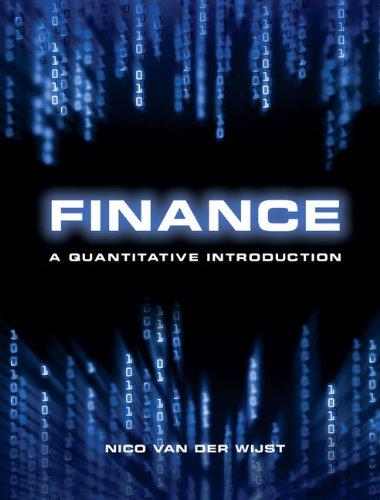Section B B.1. (20 marks) Stark Enterprises is considering the purchase of a time travel machine costing $30 billion (after tax) that will result in initial after-tax cash savings of $3.7 billion at the end of the first year, and these savings will grow at a rate of 2 percent per year for 11 years, when the project closes. Stark will be shifting some existing labour from other projects to work on this project, and these labour costs are anticipated to be a steady $52 million per year. Working capital will be increased at the initiation of the project by $17 million, and this amount be recovered at project close. After 11 years, the company can sell the parts for $5 billion, after taxes. Stark will fund this project at the company's target debt/equity ratio of 1.2. The company has a beta of 2.79. You estimate that the return on the market is 8.5% and T-bills are currently yielding 3.5% Stark has two issuances of bonds outstanding. The first has 200,000 bonds trading at 98% of par, with coupons of 5%, tace of $1000, maturing in 7 years. The second is 500,000 stripped bonds trading at 59% of par, matuting in 12 years. Stark's tax rate of 35.6%. Tony, the CEO will apply an adjustment factor to the discount rate of 2% for such highly innovative projects (... WACC + 296) Should the company take on the project? B.2. (15 marks) The total value of your portfolio is $10,000: $3,000 of it is invested in Stock And the remainder invested in Stock B. Stock A has a beta of 0.8; Stock B has a beta of 1.2. The risk premium on the market portfolio is 8% the risk-free rate is 2%. Additional information on Stocks A and B is provided below. Return in Each State B.2. (15 marks) The total value of your portfolio is $10,000: $3,000 of it is invested in Stock A and the remainder invested in Stock B. Stock A has a beta of 0.8; Stock B has a beta of 1.2. The risk premium on the market portfolio is 8%; the risk-free rate is 2%. Additional information on Stocks A and B is provided below. Return in Each State State Probability of Stocka Stock B State Excellent 15% 15% 5% Normal 50% 9% 7% Poor 35% -15% 10% a. What are each stock's expected return and the standard deviation? b. What are the expected return and the standard deviation of your portfolio? c. What is the beta of your portfolio? d. Using CAPM, whatis the expected return on the portfolio? Given your answer above, would you buy, sell, or hold the portfolio? Section B B.1. (20 marks) Stark Enterprises is considering the purchase of a time travel machine costing $30 billion (after tax) that will result in initial after-tax cash savings of $3.7 billion at the end of the first year, and these savings will grow at a rate of 2 percent per year for 11 years, when the project closes. Stark will be shifting some existing labour from other projects to work on this project, and these labour costs are anticipated to be a steady $52 million per year. Working capital will be increased at the initiation of the project by $17 million, and this amount be recovered at project close. After 11 years, the company can sell the parts for $5 billion, after taxes. Stark will fund this project at the company's target debt/equity ratio of 1.2. The company has a beta of 2.79. You estimate that the return on the market is 8.5% and T-bills are currently yielding 3.5% Stark has two issuances of bonds outstanding. The first has 200,000 bonds trading at 98% of par, with coupons of 5%, tace of $1000, maturing in 7 years. The second is 500,000 stripped bonds trading at 59% of par, matuting in 12 years. Stark's tax rate of 35.6%. Tony, the CEO will apply an adjustment factor to the discount rate of 2% for such highly innovative projects (... WACC + 296) Should the company take on the project? B.2. (15 marks) The total value of your portfolio is $10,000: $3,000 of it is invested in Stock And the remainder invested in Stock B. Stock A has a beta of 0.8; Stock B has a beta of 1.2. The risk premium on the market portfolio is 8% the risk-free rate is 2%. Additional information on Stocks A and B is provided below. Return in Each State B.2. (15 marks) The total value of your portfolio is $10,000: $3,000 of it is invested in Stock A and the remainder invested in Stock B. Stock A has a beta of 0.8; Stock B has a beta of 1.2. The risk premium on the market portfolio is 8%; the risk-free rate is 2%. Additional information on Stocks A and B is provided below. Return in Each State State Probability of Stocka Stock B State Excellent 15% 15% 5% Normal 50% 9% 7% Poor 35% -15% 10% a. What are each stock's expected return and the standard deviation? b. What are the expected return and the standard deviation of your portfolio? c. What is the beta of your portfolio? d. Using CAPM, whatis the expected return on the portfolio? Given your answer above, would you buy, sell, or hold the portfolio








